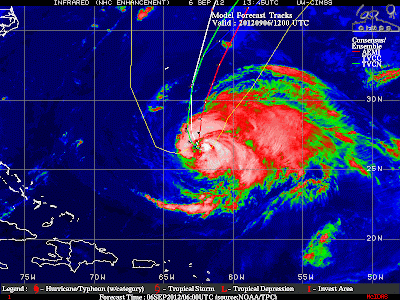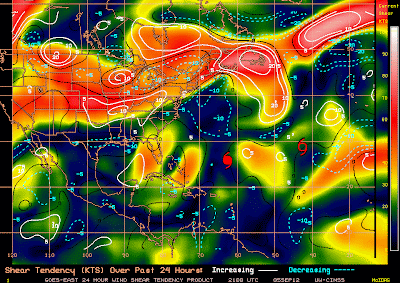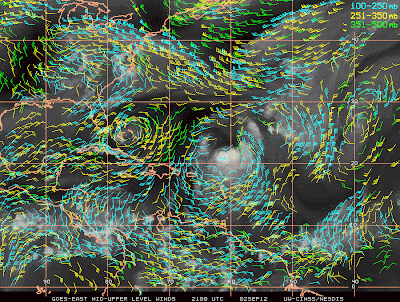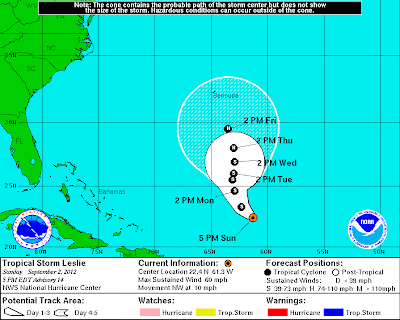The talk from the forecast offices is calm and they know the problems locally better than most others because these offices have been around a long time and seen many of these transitional storms move up the US coastline. With this in mind I will give you some observations that may be useful.
The latest reconnaissance mission through the storm has found only 40 knots near the center but there are flight level winds surrounding the broad circulation nearing 50 to 55 knots.
000 URNT12 KWBC 270029 VORTEX DATA MESSAGE AL182012 A. 26/23:52:49Z B. 27 deg 25 min N 077 deg 14 min W C. NA D. 40 kt E. 132 deg 79 nm F. 234 deg 57 kt G. 132 deg 69 nm H. 971 mb I. 12 C / 3659 m J. 13 C / 3660 m K. 9 C / NA L. NA M. NA N. 12345 / NA O. 1 / 6 nm P. NOAA2 1218A SANDY OB 21 STRONG BANDING NW MAX FL WIND 57 KT SE QUAD 23:35:53Z MAX OUTBOUND FL WIND 52 KT NW QUAD 00:07:32Z MAX FL TEMP 15 C 128 / 29 NM FROM FL CNTR
The strong banding features are associated with the large circulation expanding and transitioning to a baroclinic low. When a tropical system transitions into an extra tropical low it implies the poleward motion of the cyclone displaced from the low level circulation and the primary energy source is the baroclinic, or a change in temperature and pressure rather than the pressure and release of latent heat release of condensation due to rising warm moist air off the surface. (fig 1)
If you live along the eastern seaboard of the United States the main issue is for the coastal communities for seas, some coastal flooding especially those very low lying areas, and for rainfall from the storm which may be significant. I can only say that "IF" the model guidance is correct this could be a very large player in the forecast for the weekend. That it is the weekend that the timing could be much worse and involve commuters to work. The storm is coinciding with the astronomical high tide due to the fall tide maximum and a full moon which will add to the coastal flooding.
My advise is to be prepared, don't panic because your been here before either in hurricanes or nor'easters. Be sure to keep your weather radio handy and get supplies early. Power outages may occur, there could be some flash flooding in those areas prone to it. The best plan is to have a plan and be ready to implement it!
Let me know if and what impacts you receive from the storm. Be Safe
BC

















































